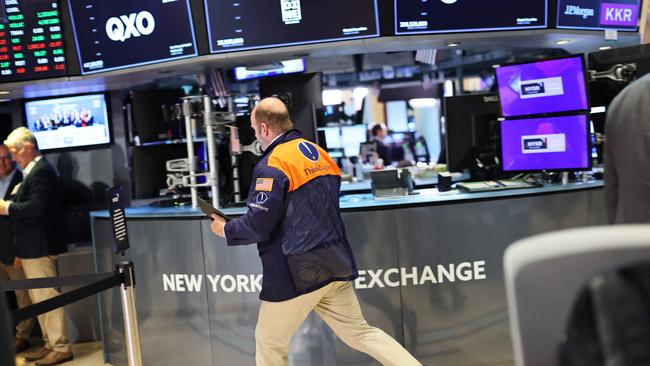BlackRock seeing more demand for non-US assets amid Trump uncertainty
BlackRock is seeing more demand for assets outside the US, with Australian investors increasingly hedging US equity exposures amid volatility.

Business
Don't miss out on the headlines from Business. Followed categories will be added to My News.
Amid uncertainty over US trade and fiscal policies and market volatility, BlackRock is seeing more demand for non-US assets and Australian clients are increasingly hedging US dollar equity exposures.
Stocks have mostly recovered from the April meltdown, and volatility has fallen significantly since the 90-day pause in US reciprocal tariffs and subsequent trade truce with China.
However, the US dollar index remains near multiyear lows and long-term US Treasury yields recently exceeded their April peaks amid expansionary US fiscal policy and the prospect of higher tariffs pushing up inflation and slowing the pace of US interest rate cuts.
While the main question for investors since the global financial crisis was simply how overweight US stocks they ought to be, investors are now questioning US exceptionalism and seeing better value elsewhere, according to BlackRock’s head of APAC investment strategy, Thomas Taw.
“No matter how you cut this, the tariff situation, or the tax bill situation, what the final numbers will be on both of them – we don’t really know – but both of them are inflationary measures,” he said.
“So at least in the short term, that impacts what expectations for the Fed are going to be.”

BlackRock is the world’s largest asset manager, with about $US11.58 trillion ($17.85 trillion) of assets under management in the first quarter of 2025.
Despite the recent volatility, investors have kept their long-term conviction in Australian stocks.
The iShares Core S&P/ASX 200 ETF (IOZ) – which tracks the ASX 200 Accumulation index – has been the most popular exposure among BlackRock’s Australian ETFs in terms of inflows in the past 12 months.
Investors have also been looking further afield for pockets of growth they can tap into.
BlackRock’s emerging markets ex China (EMXC), Japanese equities (IJP) and European equities (IEU) have all been among its top 10 ETF products in the past 12 months.
Investors are still taking some US equity exposure, but banking on Australian dollar appreciation. The hedged US equities ETF (IHVV) has been among BlackRock’s top five exposures on an inflow basis.
Except for 2022 when tech stocks were whacked, the outperformance of US stocks in recent years was backed by phenomenal earnings growth. That continued in the March quarter of 2025, but some investors have continued to question the US exceptionalism narrative.
“There are a lot of questions around US exceptionalism – how investors should move not just equity but also fixed income allocations, and a lot of questions from clients about where they should be looking at tactical opportunities,” Mr Taw said.
“In the ETF flows there’s a pretty even split between those that are continuing to avoid the US and those that are trying to take tactical opportunities, both in Europe and Asia ex-China exposures.”
Inflows to Europe have been ongoing throughout 2025 while inflows to emerging markets have been more stop-start. Interestingly, given that China is such a big portion of Emerging Markets, investors have been taking a much more nuanced approach to China.
“So basically, EM ex- China, and then China, which is something that’s relatively new,” Mr Taw said.
Despite a very strong performance of China’s tech sector, foreign buying has been dormant.
“It’s all been coming from onshore China, which I think is quite interesting,” he said.
Overall, investors want to have stocks, but with more diversification outside the US than they have done in recent years and with hedging against potential US dollar weakness.
In fixed income, the volatility and term premium is driving investors to shift exposures from long-term to short-term Treasury exposures, and lift their exposure to Asia credit, where the underlying economies offer a much better outlook than for US long term Treasuries.
“If you look at the volatility and equities in the US, the big bounce that we saw after the Liberation Day sell-off hasn’t really translated into the US fixed income market,” Mr Taw said.
In April, BlackRock, which is led by Larry Fink, saw its largest ever inflows for ETFs into short duration exposures.
“We did see some (duration risk) coming back on over the first couple of weeks in May, but for the most part, investors aren’t taking much duration risk in the US,” he added.
“It does seem like yields across the 30 year and 10 year are going to continue to move higher and there will continue to be a lot of volatility.”
More Coverage
Originally published as BlackRock seeing more demand for non-US assets amid Trump uncertainty





